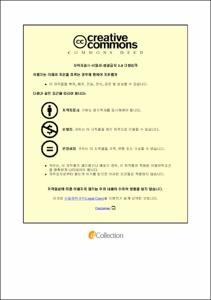디젤엔진의 천연가스/디젤 및 에멀젼연료의 배기배출물 특성 연구
- Alternative Title
- A study on characteristics of Exhaust Emission of Diesel Engine with Natural Gas/Diesel Dual Fuel and Emulsion
- Abstract
- As interest in air environmental pollution increases worldwide, various environmental regulations, including the Paris Climate Convention and IMO emission regulations, are being strengthened. In addition, emissions from diesel engines are regulated through EURO6. As such, efforts to find more efficient and eco-friendly measures are needed to meet international regulations. To do this, it is necessary to understand the generation principle of emissions (CO, CO2, NOx, SOx, and UHC), so it was described in Chapter 2, and the current commercialized emission reduction method (SCR, EGR, Scrubber, alternative fuel) was described. Based on this, the results of this experiment can be grasped. The diesel engine used in this experiment is Hyundai Motor's D4EA engine. The exhaust volume of this engine is 2000cc, with a bore 83mm, a stroke 130mm, and a compression ratio of 17.7. The experiment was carried out while maintaining the rotation speed of the diesel engine at about 2,000 rpm using a dynamometer while changing the loads of 11.7 kW, 23.4 kW, and 35.0 kW. In the case of diesel and emulsion fuels, the fuel injection time was set to 9BTDC at 11.7 kW and 23.4 kW, and 7BTDC at 35.0 kW. The common rail pressure increased by 20 MPa from 40 MPa to 100 MPa. There are three fuels used in the experiment: diesel, emulsion fuel, and natural gas/transit dual fuel. The results were obtained for the emission of carbon monoxide, carbon dioxide, and nitrogen oxide.
Carbon monoxide emissions decreased by 0.798 g/kWh until the load increased from 11.7 kW to 35.1 kW in the case of natural gas/transit dual fuels and decreased by about 0.1 g/kWh in the case of diesel and emulsion fuels. Carbon dioxide tended to decrease as the load increased, and decreased by diesel 9g/kWh, emulsion fuel 7.7113g/kWh, and natural gas/diesel dual fuel 4.2g/kWh. Nitrogen oxides were confirmed to have increased 2.65 times as common rail pressure increased when diesel and emulsion fuels were used. There was little change as the load increased. In the case of natural gas/diesel dual fuel, it can be seen that the load increased by about 1.66 times.
- Issued Date
- 2022
- Awarded Date
- 2022. 2
- Type
- Dissertation
- Publisher
- 부경대학교
- Affiliation
- 부경대학교 대학원
- Department
- 대학원 스마트로봇융합응용공학과
- Advisor
- 이경창
- Table Of Contents
- 제 1 장 서 론 1
1.1 대기환경 오염 방지에 대한 국제 동향 1
1.2 디젤엔진의 유해 배기배출물 규제 5
제 2 장 배기배출물 생성원리와 저감방법 7
2.1 배기배출물의 생성 7
2.1.1 일산화탄소의 생성 7
2.1.2 이산화탄소의 생성 9
2.1.3 미연탄화수소의 생성 10
2.1.4 질소산화물의 생성 11
2.1.5 황산화물의 생성 13
2.2 배기배출물 저감방법 15
2.2.1 SCR(Selective Catalysis Reduction) 15
2.2.2 EGR(Exhaust Gas Recirculation) 17
2.2.3 Scrubber 19
2.2.4 대체 연료 22
제 3 장 실험 장치 및 방법 25
3.1 실험 장치 25
3.2 실험 방법 32
제 4 장 실험 결과 및 고찰 35
4.1 일산화탄소의 배출특성 35
4.2 이산화탄소의 배출특성 38
4.3 질소산화물의 배출특성 42
제 5 장 결론 45
참고문헌 47
- Degree
- Master
- Appears in Collections:
- 대학원 > 스마트로봇융합응용공학과
- Files in This Item:
-
-
Download
 디젤 및 에멀젼연료의 배기배출물 특성 연구.pdf
기타 데이터 / 5.08 MB / Adobe PDF
디젤 및 에멀젼연료의 배기배출물 특성 연구.pdf
기타 데이터 / 5.08 MB / Adobe PDF
-
Items in Repository are protected by copyright, with all rights reserved, unless otherwise indicated.